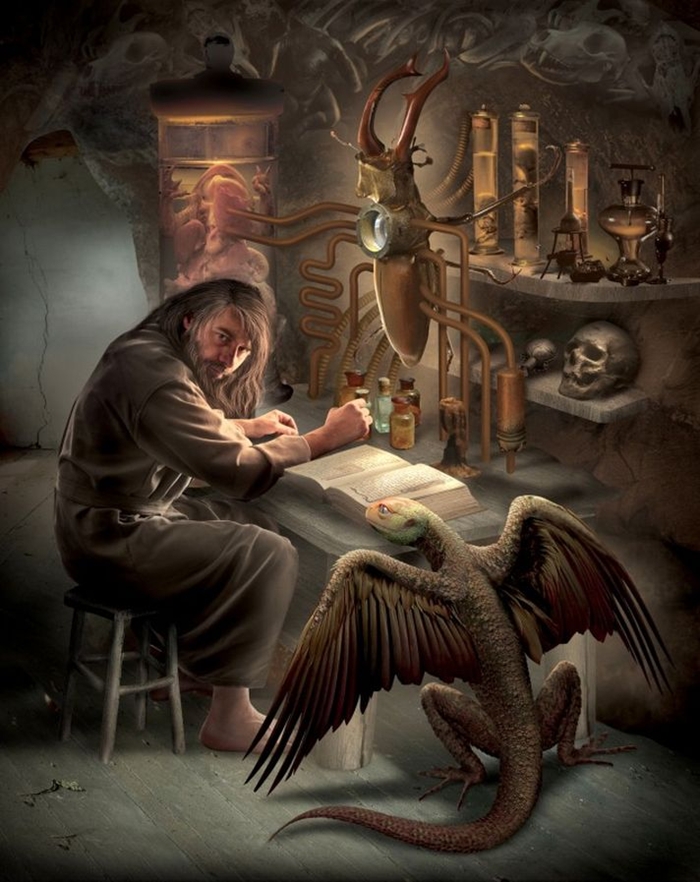
Happy GURPSDay, Children of the GURPS!
In direct contradiction to the tips I’m about to post, I am crazy far behind in my game prep for Orccon, especially considering I’m GMing in the first slot which is less than 48 hours from now and I’m still printing things out. Because of the time crunch, today’s post is just some quick thoughts on prepping a convention game (some of which naturally bleeds over to prepping for other games).
I know there are dozens of these lists all over the place, but this is what works for me. Hopefully, you’ll find something useful for you, too. I also have a few other blog posts that go into great detail on game prep.
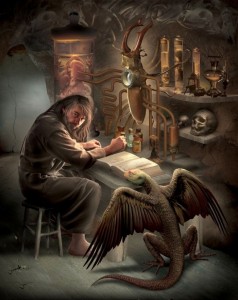
- Make the characters first. After I figure out what genre and play style I’d like to run, first step is making some characters. I usually prep six characters, even though I much prefer running 4-player games (can be too hard to share the spotlight easily with six). This gives some extra choices when you “only” have four players.
- Make the characters fun. It’s old advice, but it’s spot on — make characters you would want to play. All of them. Don’t just whip up some bland and boring healer “because the party needs one.” There shouldn’t be any dead wood or lame ducks… if you feel like a character wouldn’t be any fun for you to play, why would it be fun for someone else to play? Every PC should be awesome!
- Write down some adventure plot points. Experience has taught me to move on to writing the adventure before I print out all the characters, because invariably writing the adventure leads me to want to make changes to the PCs, adding a skill here, removing one there, etc. This is a lot easier to do if they’re not already hard copy. I tend to prep about 6 encounters/scenes for a four-hour con game.
- Opening Scene/Introduction. To start off, the PCs are “given their mission,” whatever it may be, and some explanation of the game world and important things to know. This shouldn’t just be a boring infodump, though — I try to start the game right off immediately with the PCs doing something. The rest of the info they need can be imparted once the dust settles.
- Scene One. Dangerous, usually, and challenging, but almost certainly a victory for the party.
- Scene Two. Even more dangerous, and could actually take out an unlucky PC. Raises the stakes of the story.
- Final Showdown. The end boss, climactic fight, you know… “the final showdown!” PC death, or even a full TPK, very possible.
- Encounter 1 and Encounter2. Always a good idea to have one or two (or even more) encounters that you can simply drop into the game if the players are just chewing through everything and it looks like the game might end early.
- Make the characters good looking. I don’t mean in the game, I mean the character sheets themselves, the ‘papercraft’ stuff. Use evocative images and colors, and make the text clear and easy to navigate. Here’s what my usual character sheet packets contain:
- Clear folder, with a large image of the character on the front and the actual (simple) character sheet on the back.
- Simple character sheet, hiding most of the nuts and bolts and just showing the info a player needs (i.e., no need to list point costs for a one-shot character)
- Full character sheet, including every bell and whistle possible.
- Character summary with brief backstory and connections to other PCs. For me, these are easily mutable suggestions only, as are things like gender, gear, etc.
- Simplified rules explanation, for those who have never played GURPS before. Usually, this includes the basic maneuvers, the postures table, the size/speed range chart, and a few hit locations.
- Make character stand-ups and cardstock figures. I can never remember who’s playing which character, so having stand-up signs is a must. I also print up a cardstock figure for each PC with picture, name, and color-coded facing arrow.
- Gather some mementos. I try to give out little gifts when I can — comic books, dog tags, copies of GURPS Lite and more have all come up in the past.
- Finish Early. Finish Early! For me, personally, this is crucial! It is so nice to be able to relax in the week up to the con instead of trying to finish prep the Hunter S. Thompson way — type, type, pass out in the chair, wake up after a few hours, pound Mountain Dew (well, for me — I believe he was more of a Wild Turkey man), type, type, more Dew, type, pass out, round and round until everything’s done.
- Playtest. If you can, get all your prep done so early that you can actually run the game before the con! This is a great way to notice things you forgot, or made mistakes on, and sometimes a player will make a suggestion so perfect, you’ll be glad you got to hear it early enough to use it.
Here are a few examples from past games.
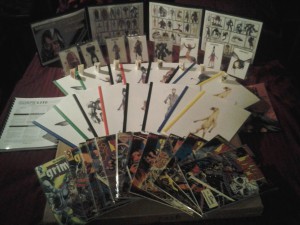
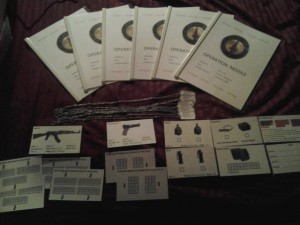
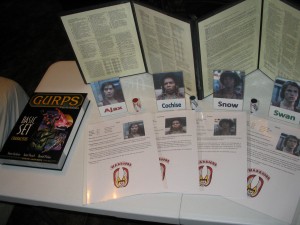
I love running games at conventions, and I’ve got my prep process pretty streamlined. I’d love to hear what you all do differently, or anything I forgot!
If you enjoyed this post and others like it, might you consider the Game Geekery Patreon?
I’d heard that the Mountain Dew you have in the States is more caffeinated then we have in Canada, but I didn’t realise it was Hunter S Thompson’s stimulant of choice. Good to know. Have fun at Orccon! One of these years I will get down there.
Hehe, I clarified that a bit with an edit… Thompson would slap the Dew out of my hand, force-pour absinthe down my throat, and insist I ingest a bag of ‘shrooms at gunpoint. 🙂
I feel your pain. I am prepping for DunDraCon 40. Meanwhile, my wife is bemused by my inability to find anything!
Yep! Every single con, I swear I will start prepping for the next one immediately… and every single con, I spend the final week in a frantic, whirling dance of death with Word, some cardstock, and a glue stick.
I normally start with a general game theme and setting, then have a high level plot outline, and then create the characters. After I have characters I finalize the plot.
One idea I plan on trying is to have paper tents with character names and pictures, so that each player will have a tent in front of them at the table.
Nice 🙂 If you try the tents and like ’em, I really recommend some little frames like the ones pictured above. Nice to be able to print out whatever you want for each game and slip them in!
What do you use to make cardstock figs?
I have a Word .docx template that I re-use from campaign to campaign. Open in Word, change the text and picture, print on card stock, cut-fold-glue, voila.
* Template (https://www.themook.net/gamegeekery/?ddownload=2613)
* This is the heaviest stock my printer will handle (http://www.amazon.com/gp/product/B006P1EQXA?)
I don’t use Word. I use Open Office. But I can still open it